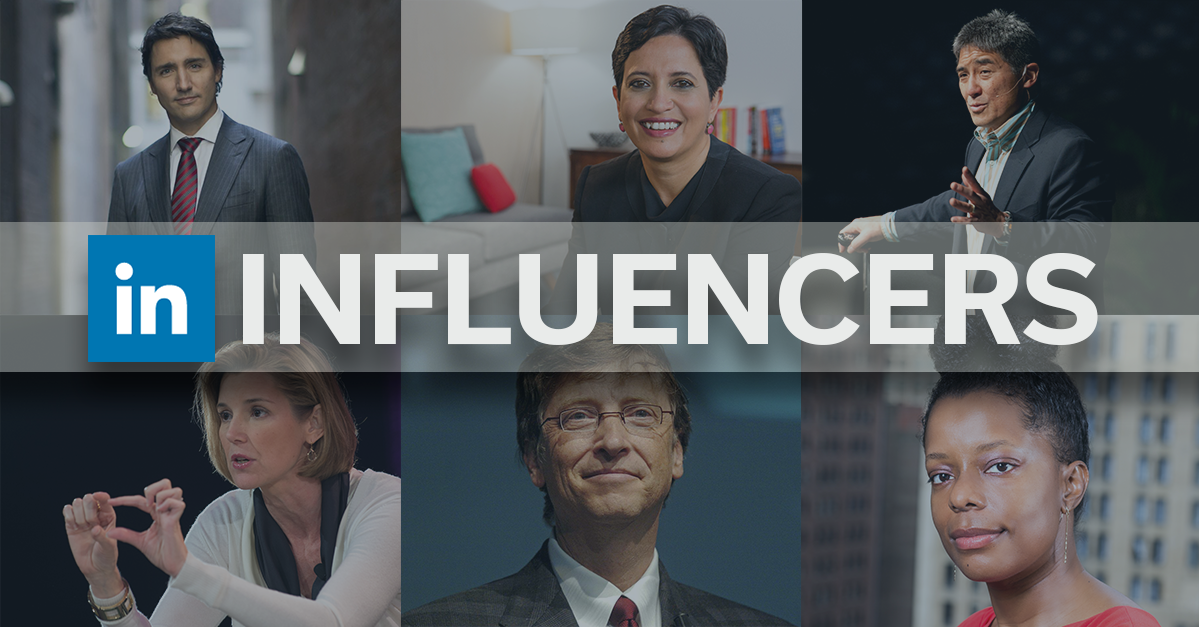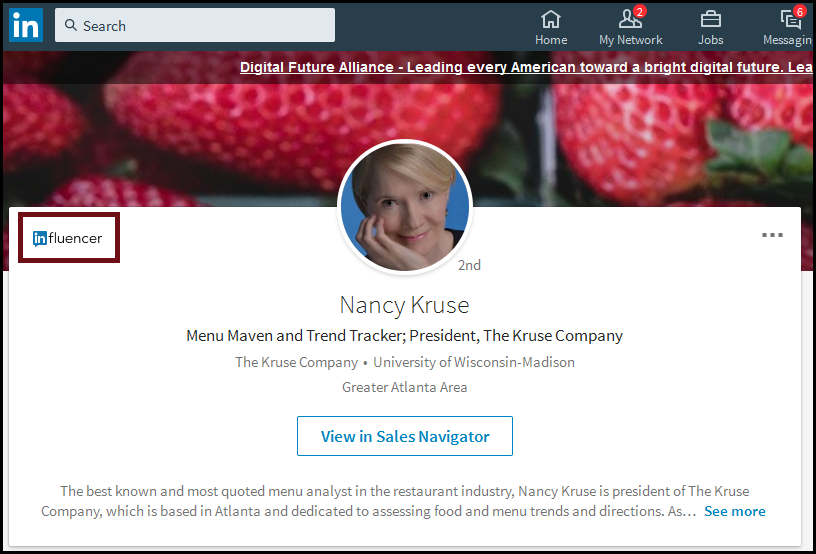Have you heard of LinkedIn Influencers? Experienced LinkedIn users ask us a fair number of questions about them. Who are they? Should you follow them? Why? What makes someone an influencer? Why can’t I find [fill in name here] in the list of influencers?
Let’s answer those questions and clear up some of the misconceptions…
What is a LinkedIn Influencer?
Here’s the official LinkedIn Influencer description:
“LinkedIn Influencers are selected by invitation only and comprise a global collective of 500+ of the world’s foremost thinkers, leaders, and innovators. As leaders in their industries and geographies, they discuss newsy and trending topics such as the future of higher education, the workplace culture at Amazon, the plunge in oil prices, and the missteps of policymakers.”
A team of LinkedIn editors decides who they will name as influencers, and works with the people they designate to create content they believe will be interesting to LinkedIn members. There is no one master list (at least, not one that’s easily available), and the list changes throughout the year. New people are added, such as Justin Trudeau, who recently became an influencer. People are removed as well.
If you are on someone’s profile, you can tell if they have the LinkedIn Influencer designation. There is an official stamp located in the top left corner of the profile as shown in the following image.
Many (actually, most) well-respected influencers and thought leaders don’t have the official stamp, so don’t be surprised if someone you respect isn’t included.
How to find LinkedIn Influencers
Currently, there isn’t one place where you can look up all the official influencers. Start with the LinkedIn Influencers page. It lists recommendations for you based on what LinkedIn thinks you will find interesting. Select the ones you wish to follow.
Another place to look is Top Voices, which lists industries. They’re not necessarily official influencers, but they are well-respected in their field.
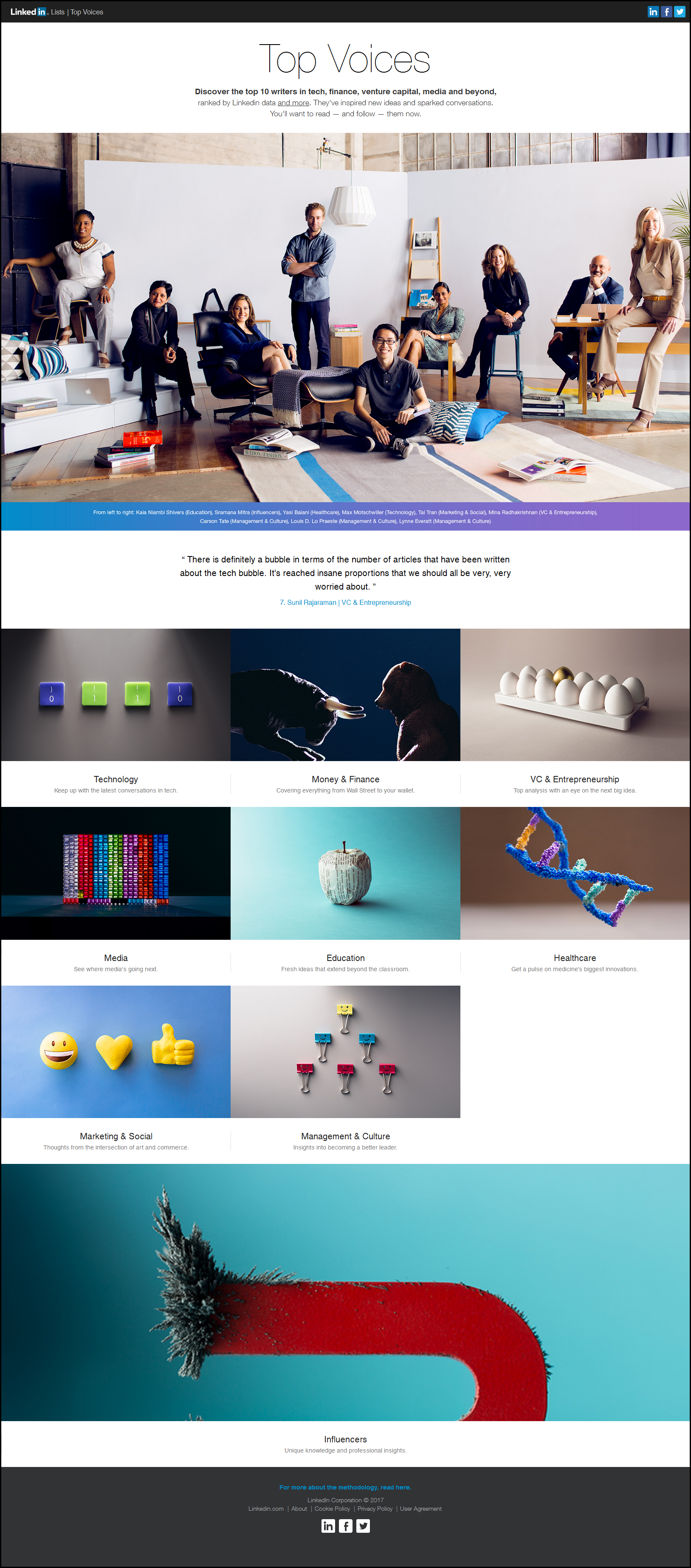
Selecting Technology and then the influencer opens the following.
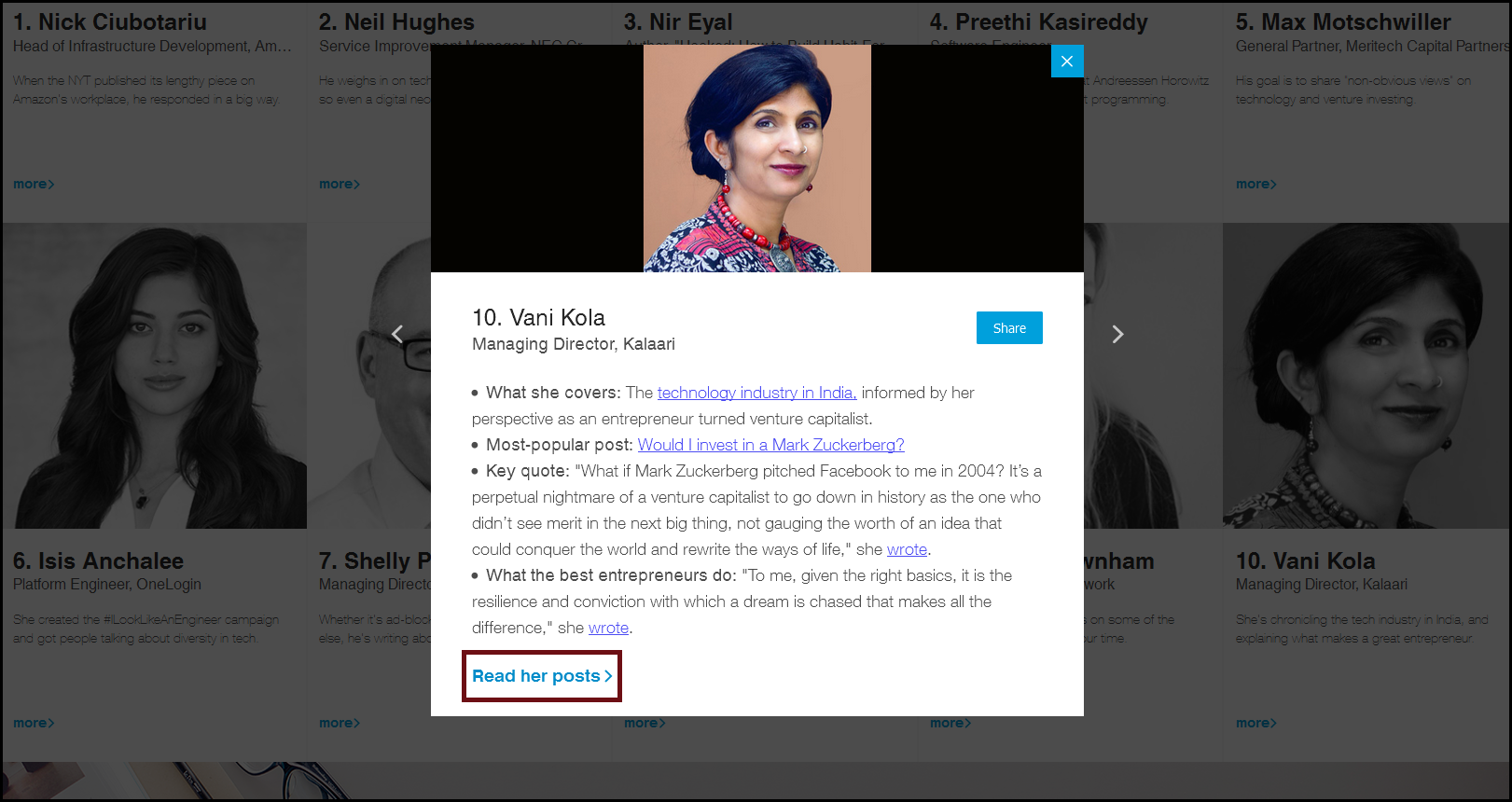
This description provides details about the person’s background. If you’re interested, go read the person’s posts. There, you’ll be able to follow the person.
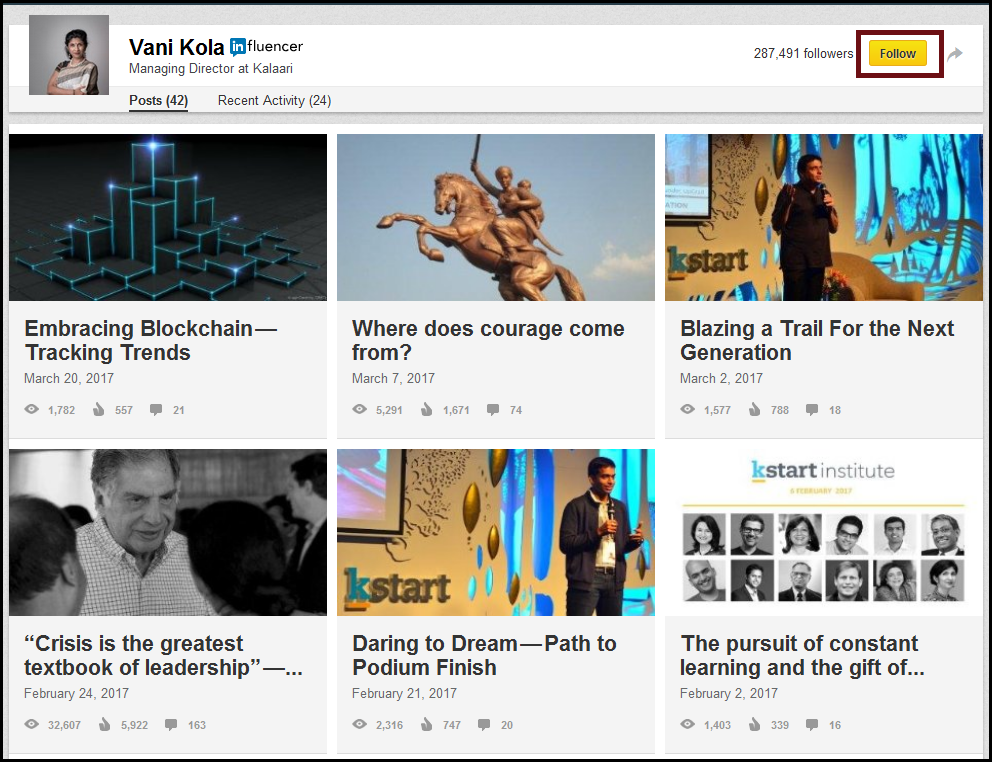
Unlike the list of Channels, you can’t “see more” to view additional influencers. Nevertheless, here is a list of the top 10 influencers on LinkedIn from 2015 and 10 must-know influencers from 2016.
When you visit an influencers’ profile, jump to the bottom to see the list of the people they’re following. Better yet, go to LinkedIn CEO Jeff Weiner‘s profile and check the long list of influencers he follows.
Of course, you can follow anyone regardless of whether or not they are a LinkedIn Influencer. It’s a good idea to follow association executives, consultants, columnists, bloggers, and other industry experts you respect.
To follow someone who isn’t an official LinkedIn Influencer, visit the person’s profile. Scroll down to the person’s articles and activity. You should see a Follow button to click as shown in the next image.
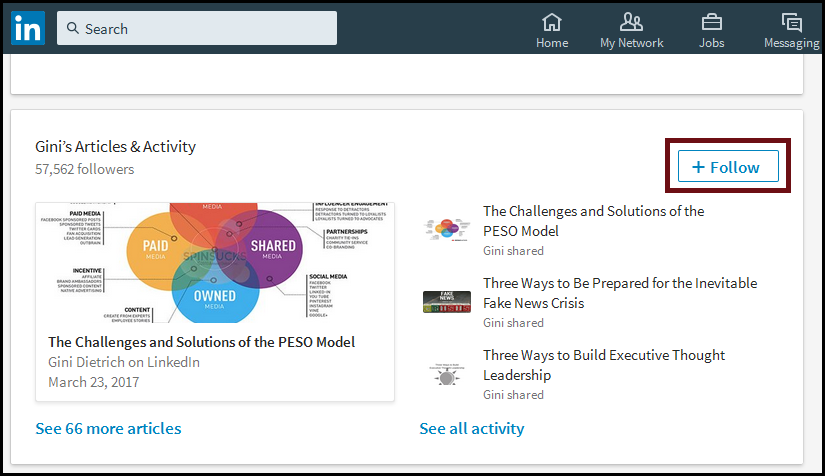
To view someone’s blog posts, visit the person’s profile and scroll down to “Articles & Activity.” You can view the latest article and select to read more.
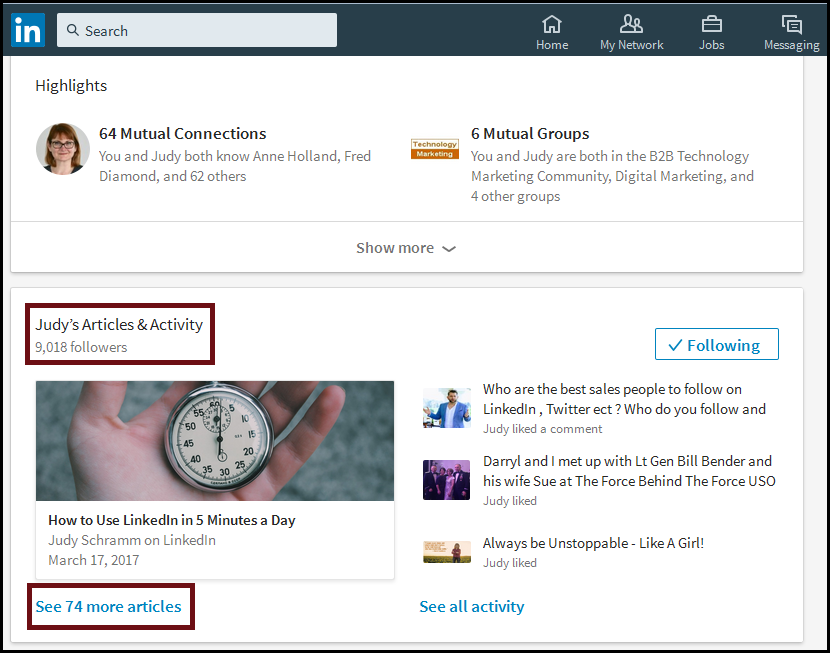
Why should I follow LinkedIn Influencers?
Following them gives you a useful way to keep up with news and trends that matter to you. You can learn from their ideas and get useful insights. Considering so few gain this status, they’re the cream of the crop.
It’s also useful because if you want to build your own reputation for thought leadership – learning from their example can help you on that path.
Where do I find their articles?
Whenever you open LinkedIn, you’ll see a newsfeed of the latest articles and blog posts from your connections and whomever you follow – LinkedIn Influencers, your own chosen thought leaders, companies, and individuals. You can Like, Comment on, or Share the updates.
Adding LinkedIn Influencers gives you a reliable source of interesting articles, both for your own education and to share with your connections. Most of your connections will not follow the same influencers you choose, so sharing these articles provides value.
LinkedIn Influencers in Tech
We work with technology executives, who are typically interested in following tech influencers. Here are a few we particularly like:
- Beth Comstock, vice chair at GE
- Claire Diaz-Ortiz, adviser to startups and social enterprises
- Ryan Holmes, CEO of Hootsuite
- Glenn Kelman, CEO of Redfin
- Betty Liu, Founder and CEO of Radiate, Inc.
- John Maeda, global head of computational design and inclusion at Automattic
- Satya Nadella, CEO of Microsoft
- T. O’Donnell, founder and CEO of WorkItDaily.com
- Justin Rosenstein, co-founder of Asana
- Hunter Walk, partner at Homebrew VC
One issue to consider is that some LinkedIn Influencers write about controversial or political topics.
Think about the type of executive or prospect who typically visits your LinkedIn profile. They will be able to see the people you follow. They are listed in a section near the bottom of your profile. If you are not comfortable with other people knowing you followed someone, don’t follow them.
While you’re on an influencer’s profile, look for the person’s Following list to get more ideas as the next image shows.
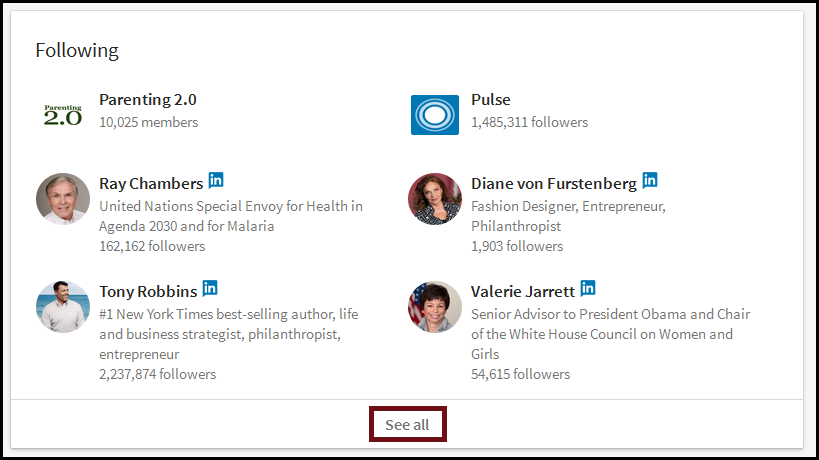
You can see which ones you follow and don’t follow as the next image shows.
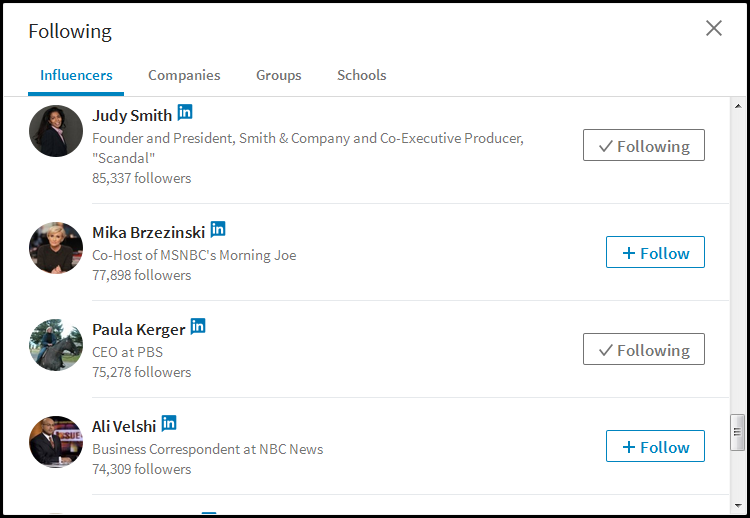
Remember, don’t limit yourself to LinkedIn influencers. You’ll also want to connect with industry influencers on LinkedIn. Because they’re not likely to have as big a following as the official LinkedIn influencers, you have a better chance of connecting with the person.
How to become an influencer using LinkedIn
While it is challenging to get the LinkedIn Influencer symbol by your name, it’s still valuable to take steps to become one. When others in your industry perceive you as an influencer, they are more likely to accept your messages and step into a conversation. It could also lead to new clients, interviews and speaking opportunities.
To become an influencer using LinkedIn, share interesting articles and publish blog posts on LinkedIn. Need more ideas on how you can use LinkedIn to become an influencer?
Here are 7 ways to become a thought leader on LinkedIn:
- Publish blog posts: Whether or not you publish blog posts on your company’s website, you can publish on LinkedIn. A blog is included free as part of your LinkedIn profile.
- Post status updates: Link to articles of interest to your audience, add your thoughts on a topic, share industry news, and ask questions.
- Reply to others: Leave a genuine comment on someone else’s status update, group post, or blog post. People get a kick out of responses to their postings. You can also Like updates and blog posts, and that’s fine especially if you don’t have a useful comment to add. But comments go further than a Like.
- Share other people’s posts: This is better than a Like because you’re sharing the post or status update with your audience, thus expanding your connection’s reach. Your connection might notice and appreciate it.
- Participate in the right groups: Granted, LinkedIn Groups have lost their luster due to spam. But beneficial groups still exist. Find the ideal groups based on your interest, industry, target audience, and level of activity. Listen for a bit and then join in with your thoughts and resources.
- Add media to your profile: LinkedIn profiles accept documents, photos, videos, presentations, and links to external resources. If you’ve been in a podcast, given a speech, made a presentation, or appeared in an article, include them.
- Send messages to connections: One of the most valuable things you can do is stay in touch with your connections regularly. An easy way to do this is by sharing a tip or an interesting article.
Spend just 10 minutes a day or one hour a week doing any of these seven activities. This will build your brand as an influencer. Once you develop a consistent presence, people will remember you when it comes time for them to need you.
Make LinkedIn Work For You
Need coaching to help you get started? Here is an executive branding program that can help you create a strong personal brand. You could also schedule a free 15-minute call to share what you’d like to accomplish, and see if this program can get you the results you want.
Let’s Talk!

